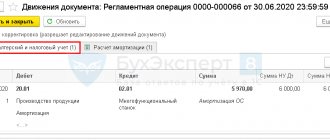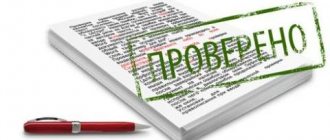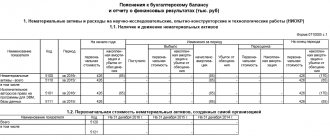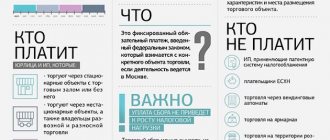What the Ministry of Finance of the Russian Federation says about VAT deduction on a cash receipt
Hidden text
- the goods were purchased at retail (even if the VAT amount is highlighted as a separate line in the cash receipt);
- the company wishes to include VAT as an expense when calculating income tax.
A common situation was considered. An employee is given money on account for the purchase of office supplies, for example. There is no invoice. The employee draws up an advance report and attaches a cash receipt with the VAT amount highlighted on a separate line. The company is wondering whether the accountant has the right to deduct VAT. If this is not possible, then can VAT be included as an expense when calculating the taxable base for income tax?
It should be noted that from July 1, 2021, all sellers of goods and services switched to online cash registers, which means that absolutely all cash register receipts will include information about VAT and the tax rate - this is the requirement of the law “On the use of cash registers”. technology in the Russian Federation."
The Ministry of Finance of the Russian Federation emphasizes that, according to the instructions of paragraph 1 of Art. 172 of the Tax Code of the Russian Federation, VAT can be deducted on the basis of the following documents:
- Invoice issued by the seller.
- Documents proving payment of VAT withheld by tax agents.
- Documents that prove the fact of payment of VAT when importing goods into the territory of the Russian Federation.
- Any other documents in cases where a deduction can be made for VAT paid by the organization as part of entertainment or travel expenses, as well as directly to the budget.
Based on the instructions of paragraph 1 of Article 172 of the Tax Code of the Russian Federation, the financial department concluded that VAT deduction is impossible when purchasing goods at retail. Even the fact that VAT is listed as a separate line on the cash receipt does not allow taxpayers to make a deduction. The Ministry of Finance of the Russian Federation does not allow the accounting of VAT as part of income tax expenses - clause 2 of Art. 170 of the Tax Code of the Russian Federation does not provide for the possibility of including the amount of tax in the cost of goods. But according to paragraph 1 of Art. 170 of the Tax Code of the Russian Federation, in other cases, amounts of value added tax presented at the time of purchase of goods cannot be taken into account as part of income tax costs
.
“1C: Accounting 8” (rev. 3.0): how to take into account VAT when purchasing fuel using a cash receipt (+ video)
The video was made in the program “1C: Accounting 8” version 3.0.84.46.
In practice, there are often situations when fuel for vehicles used in the organization’s activities is purchased by an accountable person at a gas station using a cash receipt. In this case, the VAT amount can be highlighted as a separate line in the cash receipt.
In general, tax deductions for VAT are made on the basis of invoices issued by sellers when the taxpayer purchases goods (work, services), property rights (Article 171, paragraph 1 of Article 172 of the Tax Code of the Russian Federation).
In relation to goods purchased in retail trade organizations, the Tax Code of the Russian Federation does not provide for the specifics of deducting VAT amounts. Therefore, VAT amounts on fuel purchased at gas stations without invoices are not accepted for deduction and are not taken into account in tax expenses.
This procedure for accounting for VAT corresponds to official explanations (see letters of the Ministry of Finance of Russia dated June 25, 2020 No. 03-07-09/54634, dated August 13, 2018 No. 03-07-11/57127).
Starting from version 3.0.84 in “1C: Accounting 8” in the document Waybill
(section
Purchases
) you can choose the VAT accounting procedure and automatically exclude from tax expenses the amount of VAT on fuel purchased using a cash receipt without an invoice.
In the upper right corner of the Waybill
There is now a hyperlink, by clicking on which you can set one of two values:
- VAT in the amount -
in this case, VAT is separated from the total amount of the check and is not included in tax expenses; - Do not allocate VAT -
in this case, VAT is not allocated from the total amount of the check, and the entire amount on the check is included in the cost of fuel.
If in the document the Waybill
For the VAT accounting procedure, the value
of VAT in the amount
, then
additional fields appear
Fuel % VAT
,
VAT
and
Total
.
When filling out the VAT rate, the VAT
and
Total
are calculated automatically.
When posting a document, the following transactions are generated:
Debit 10.03.2 Credit 71.01
— the amount (excluding VAT) and quantity of gasoline purchased;
Debit 26 Credit 10.03.2
- the amount of gasoline written off. The final cost of fuel, taken into account in expenses for accounting and tax purposes, will be formed at the end of the month when performing the routine operation Adjustment of item cost
included in
the Month Closing
;
Debit 19.03 Credit 71.01
— for the amount of allocated VAT;
Debit 91.02 Credit 19.03
- the amount of write-off of the allocated VAT for other expenses. At the same time, for profit tax purposes, the amount of VAT is not included in expenses.
In a similar manner, VAT amounts on fuel in the absence of an invoice are not included in tax expenses when calculating personal income tax by an individual entrepreneur.
For more information on accounting for fuel costs based on waybills, see here.
VAT deduction on a cash receipt - the opinion of the courts
The courts turned out to be not as categorical on the issue of deducting VAT on a cash receipt as the Ministry of Finance of the Russian Federation. For example, the Presidium of the Supreme Arbitration Court indicated that when selling goods at retail for cash, the requirements for issuing invoices are recognized as fulfilled when the seller issues the buyer a cash receipt (or other document of the proper form) (clause 7 of Art. 168 of the Tax Code of the Russian Federation). Accordingly, the buyer has the right to deduct VAT if payment for goods was made taking into account value added tax. See Resolution of the Presidium of the Supreme Arbitration Court of the Russian Federation dated May 13, 2008 No. 17718/07, Resolution of the Federal Antimonopoly Service of the Moscow District dated August 20, 2007 No. KA-A40/7956-07.
VAT deduction based on a cash receipt: how the courts interpret the situation
Unlike the Federal Tax Service and the country's main financial department, the courts are not so categorical. They adhere to the line that it is impossible to refuse a tax refund simply because of the absence of a tax return, if the payment of VAT is confirmed by a cash receipt or BSO with the necessary details available.
The basis for such decisions is the same paragraph 7 of Art. 168 Tax Code of the Russian Federation. The Presidium of the Supreme Arbitration Court pointed out back in 2008 that for retail purchases of inventory items used later in the enterprise, the transfer of a cash receipt to the purchaser is recognized as equivalent to the execution of the transaction by an invoice, and the obligation to draw up an invoice is considered fulfilled. Naturally, the right to a VAT refund applies only to transactions in which payment was made taking into account the tax.
Conclusions: since it is currently difficult, or rather impossible, for a VAT payer to avoid problems with regulatory authorities that arise regarding the presentation of VAT on cash receipts (it will be difficult to accept it for deduction) , it is better to purchase inventory items for cash in specialized contract departments of retail enterprises . In them, purchases are formalized by the Federation Council, and these documents will save the applicant from explanations and litigation, confirming the legal right to a tax refund.
When is VAT allowed to be deducted?
In the event that an LLC or individual entrepreneur who owns a store pays VAT, the purchase amount will include the amount of value added tax.
If the following conditions are met, input VAT is allowed to be deducted: (click to expand)
- the company has documents indicating the existence of the right to deduct VAT;
- the purchased goods were capitalized on the company’s balance sheet;
- goods were purchased for the purpose of carrying out production activities, resale or any other operations that are subject to value added tax.
As for the first point about the availability of documents proving the right to a tax deduction, this condition previously caused disputes with the Federal Tax Service. The Tax Service believes that the right to deduction is confirmed by only one document - the invoice issued by the seller. See Letter of the Ministry of Science of the Russian Federation dated May 13, 2004 No. 03-1-08/1191/ [email protected] The Ministry of Finance agreed with the decision of the Federal Tax Service, as evidenced by:
- Letter of the Ministry of Finance of the Russian Federation dated August 25, 2017 No. 03-07-14/54643;
- Letter of the Ministry of Finance of the Russian Federation dated January 12, 2021 No. 03-07-09/634;
- Letter of the Ministry of Finance of the Russian Federation dated 06/02/2021 No. 03-07-14/45605.
Important!
At the time of purchasing goods in a store, an invoice issued by the seller is not required. Typically, sellers issue only a sales receipt and a cash receipt.
As stated in the text of paragraph 7 of Art. 168 of the Tax Code of the Russian Federation, in the case of selling goods for cash, the requirements for issuing invoices and drawing up settlement documents are considered fully met if the buyer received a cash receipt or other document of the established form from the seller (for example, a strict reporting form). Accordingly, current tax legislation allows taxpayers to deduct VAT if:
- the product was purchased at a retail outlet;
- the seller did not issue an invoice;
- In the cash register and sales receipt, the VAT amount is highlighted as a separate line.
Blog about taxes by Vladimir Turov
Good afternoon, colleagues.
Ask your accountant: “Is it possible to deduct VAT without an invoice?” Any accountant will tell you: “Never in my life.” And a professional accountant will refer to Articles 169 of the Tax Code of the Russian Federation and 172 of the Tax Code of the Russian Federation and say: “Never in your life will you be able to deduct VAT if there is no correctly drawn up invoice. No deduction, no refund."
If you've been to my seminars, I say the same thing every time... Yes, it's true. But the truth is also this. For example, you paid VAT to your supplier, contractor or subcontractor as part of the price for a service supplied, work performed, goods or raw materials. You have all the documents confirming the fact that this work was performed or the fact of this delivery, but there is no invoice. But this work was really done, and this is confirmed by papers. I have always said that VAT can still be deducted, and the court will be on your side.
Another example that I give at every seminar. Your drivers refuel at gas stations and receive an online receipt with a dedicated value added tax. Is it possible to deduct VAT using an online check?
Your accountant will be 100% right when he refers to Article 169 of the Tax Code of the Russian Federation or Article 172 of the Tax Code of the Russian Federation and says: “No, it is absolutely impossible to deduct VAT.” And the courts will be on your side if you deduct it.
This is possible for the simple reason that from the point of view of the logic of Chapter 21 of the Tax Code of the Russian Federation , which describes VAT, you are included in the price of a service, as part of the price of work, as part of the price of goods, raw materials or supplies, VAT to the budget, through your supplier or the contractor has already been paid. You have fulfilled your VAT obligation because you have a payment slip that says “payment with VAT” and an agreement that says “payment with VAT.” The money has been debited from your bank account, including VAT, and you have all the evidence. Colleagues, this is important.
So, the court decision that confirms this: Resolution of the Far Eastern District Court No. F03-1719/2018 dated May 31, 2021 in case No. A51-14757/2017. I quote: “Satisfying the requirements stated by the company, having examined and assessed the evidence presented in the case materials in their totality and interrelation, guided by the provisions of Articles 168, 169, 171, 172, 173, 176 of the Tax Code of the Russian Federation, the appellate court proceeded from the fact that the inaction of the counterparty under failure to issue an invoice cannot serve as an insurmountable obstacle to obtaining a VAT deduction by a bona fide taxpayer – LLC “...”, came to the conclusion that the company’s use of controversial tax deductions of VAT amounts is legal.”
You paid this VAT in good faith. You have all the papers, and even your employees confirmed that you really worked with this counterparty.
I consider this point to be extremely important. Because anything can happen with invoices. The signature is wrong, the seal is wrong, they didn’t receive it, they lost it, the counterparty doesn’t want to exhibit it for some reason... Maybe he’s unscrupulous, maybe he doesn’t want to pay VAT... But on the contrary, a conscientious businessman suffers. Therefore, be sure to study this court ruling.
Of course, the VAT problem is a universal problem. This problem is not only yours... I ask you to repost this article as much as possible: like it, forward it to your friends and acquaintances who work on the classical tax system, because they are faced with exactly the same situations.
We will talk in more detail about all the ways to reduce VAT, including at a seminar in Moscow on August 1-2. Come - you won't regret it.
Thank you, good luck with your business.
SIGN UP FOR A SEMINAR IN MOSCOW AUGUST 1-2
Links to the regulatory framework:
Resolution of the Far Eastern District Court No. F03-1719/2018 dated May 31, 2021 in case No. A51-14757/2017
(Visited 364 times, 1 visits today)
Vladimir Turov
Head of legal practice, practicing and leading specialist in tax planning, building individual tax schemes and holdings, optimizing financial flows.
VAT deduction on a cash receipt - conclusions
When an item is purchased at a retail store for cash, taxpayers are entitled to a VAT deduction based on the sales receipt, even if there is no invoice. The main thing is that the VAT amount is highlighted as a separate line in the goods and the cash receipt.
If a conflict arises with the tax service, you can refer to arbitration practice. The judges are of the opinion that it is impossible to refuse a VAT deduction only because of the absence of an invoice if there is a cash receipt or other document of the established form.
To avoid problems with the Federal Tax Service, whose inspectors refuse to deduct VAT in the absence of an invoice at the time of the on-site inspection, it is better to carry out the purchase and sale operation in special contract departments of retail stores
– specialists will issue an invoice, cash receipt order or invoice to the buyer who paid in cash. When the VAT amount is highlighted as a separate line in the listed documents, VAT can be deducted.
Common mistakes
Error:
The taxpayer accepted VAT as a deduction after purchasing goods for cash in a retail store. In the cash receipt, VAT was not highlighted as a separate line.
A comment:
If the seller did not issue an invoice when purchasing goods at retail, VAT can be deducted on the basis of a sales or cash receipt, but the VAT amount must be highlighted on a separate line.
Error:
The purchased goods were not recorded on the company's balance sheet. The taxpayer accepted VAT for deduction on the basis of a cash receipt with the amount of value added tax highlighted as a separate line.
A comment:
In order to have grounds for deducting VAT, it is necessary to capitalize the purchased goods on the balance sheet of the enterprise, retain documents confirming the right to deduct, resell the goods or use them in the course of production activities or in carrying out other transactions subject to VAT.
Answers to common questions about VAT deduction on a cash receipt
Question #1:
Can you be sure that the tax office, during an on-site audit, will not refuse to deduct VAT due to the lack of an invoice?
Answer:
The Federal Tax Service is of the opinion that VAT deductions can only be made if there is an invoice. Therefore, if the taxpayer only has a cash receipt in which VAT is highlighted as a separate line, claims from the tax inspectorate cannot be avoided, despite the fact that the opinion of the arbitration judges does not agree with the position of the Federal Tax Service. The only way to avoid claims is to complete the purchase of goods in a special contract department of the store, where sellers issue an invoice, delivery note and cash settlement for buyers who paid in cash.
Question #2:
There is a cash receipt for the purchase of goods in a retail store. Is it possible to deduct VAT without an invoice if the goods were not purchased for the purpose of using them in the business of the company?
Answer:
It is allowed to deduct VAT on the purchase of goods that were purchased for the purpose of resale or use in the economic activities of the enterprise. If the goods were purchased for other purposes, VAT cannot be deducted in any case.






